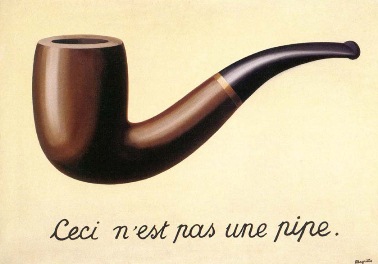Words are not ideas, anymore than the picture above is a pipe (it’s a picture of a pipe).
When we communicate about ideas we are forced to use words (or gestures or images, which are also not the ideas themselves), and so consequently we are never communicating ideas directly. We communicate about ideas through the medium of language.
It is possible for someone to learn the words that represent an idea without learning the idea themselves, even so much as to be able to mimic the output expected of someone who understands the idea.
This happened to me. I learned about linear functions in school. I learned about “constant rates of change” and “y = mx + b” and “find the rise over the run” and many other phrases which were connected to finding and subsequently graphing the equation of a line. I even later learned how to think of a specific line as a transformation through a translation and a rotation from any other line.
However, in a fourth year topology class, my professor used a completely different set of words. He said, “Let’s do an easy example. We have line segment AB and line segment CD, and our objective is to find the mapping function from AB to CD. Think about that problem and bring your work to next class.” Well, I spent a week thinking about that problem and could not do it. I spoke to my professor about it, and he gave me a look and told me that it was “not my fault, this is unfortunately due to how you were taught.” Note how I was earlier able to articulate “transform one line into another”, but not able to repurpose this information to create a function. It turns out, the solution is a linear function.
Here I am, many years later, with a much better understanding of the wide range of things in our world which are linear functions. In fact, in only a few minutes, I am now able to “prove” to myself (at least experimentally) a more general version of what my professor asked me to prove all those years ago. I have moved past a “just the words” understanding of linear functions into a more flexible and useful understanding.
This is the objective of good mathematics teaching, and the reason why I think that we need far fewer lists of things to achieve with our students, and far more time spent looking at very similar things but in a very wide range of contexts. We need to move past students learning about the words that represent mathematics and giving them enough time to actually learn about the corresponding ideas.
